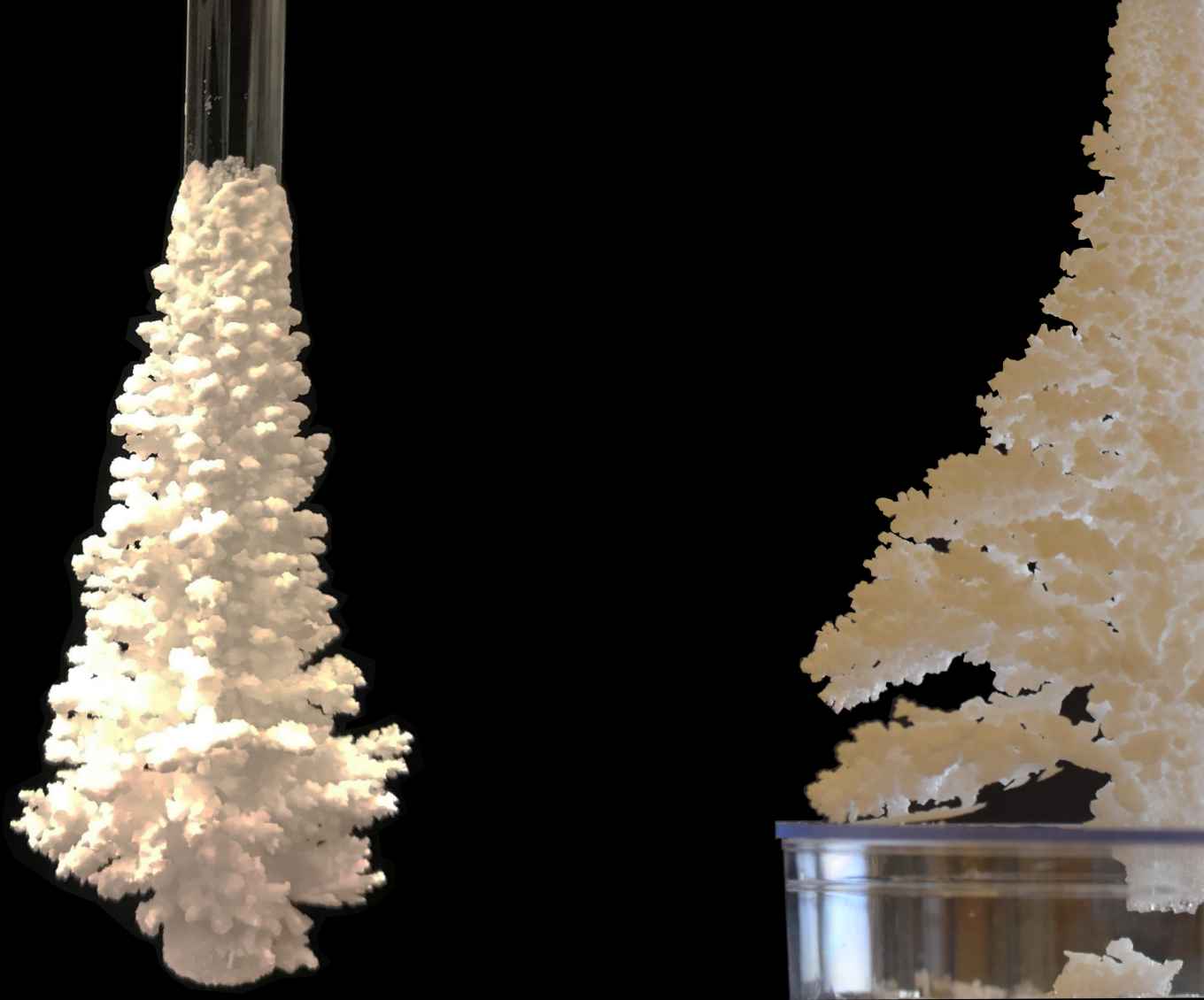Creeping of salt better understood
13 January 2020

Salt creeping is a ubiquitous phenomenon in which crystallization of salt occurs far from the location where the solution evaporates. The phenomenon constitutes a major problem in outdoor electronics, civil engineering, artworks and agriculture. In their paper, the researchers provide a quantitative understanding of the creeping mechanism and show that the creeping occurs universally, for many different salts.
Critical angle and self-amplifying process
Whether the salt creeping occurs or not turns out to be dependent on the angle between the surface of the solution and the material that the salt creeps up to. The researchers found that below a certain critical contact angle, in conditions where the solution is evaporating at a high rate, the creeping is most likely to occur.
They also show that salt creeping, once initiated, is a self-amplifying crystallization process. The creeping crystal grows faster and faster, causing an exponential increase of the crystal’s mass in time. The results can be a spectacular three-dimensional crystal network at a relatively large distance from the solution reservoir.
Damage control
The better understanding of the salt creeping phenomenon can help preventing the effect. In their paper, the scientists discuss how salt creeping can be inhibited by for example adding crystallization modifiers into the solution. This could prevent damage to outdoor electronics, or for example to vulnerable outdoor artwork.
Reference
Salt creeping as a self-amplifying crystallization process, M. J. Qazi, H. Salim, C. A. W. Doorman, E. Jambon-Puillet and N. Shahidzadeh. Science Advances Vol. 5, no. 12, eaax1853, 20 Dec 2019. DOI: 10.1126/sciadv.aax1853.